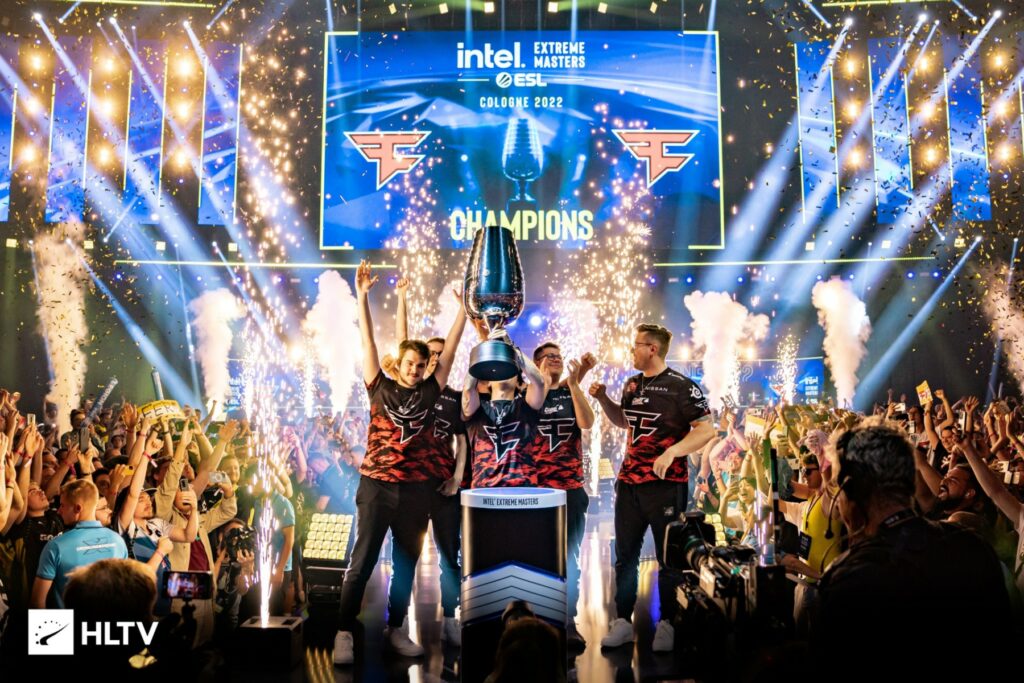Electronic sports and entertainment company Faze Clan recently went public via a $725 million SPAC merger with B. Riley Principal 150 Merger Corp. — a move that gave the company flexibility to raise capital during an uncertain time for the economy and SPACs at large.
The buzzed-about company was once a gaming clan that garnered attention through YouTube, posting clips and highlight reels from games in the “Call of Duty” video game franchise. Now, about 12 years later, that clan has grown into a multi-million-dollar digital entertainment company with millions of followers, brand partnerships and a board of directors that includes Snoop Dogg and Daniel Shribman, chief investment officer of B. Riley Financial.
The company’s stock is listed on the Nasdaq exchange under the ticker symbol “FAZE” and as of Aug. 3 was trading at $12.53 a share.
Faze Clan Chief Executive Lee Trink told the Business Journal that using a SPAC, or special purpose acquisition company, to go public on July 20 was important for the firm to be able to educate audiences about what Faze Clan is and the future growth potential of the brand, noting that the Gen Z native gaming industry is fairly new to the market.
The IPO arrives at a time when the company has incurred, and expects to continue to incur operating losses, which have been present since its inception, according to filings with the Securities and Exchange Commission. As of March 31, Faze had an accumulated deficit of $122 million, $10 million more than the previous quarter.
Tobias Seck, an analyst at Sports Business Journal and The Esports Observer, told the Los Angeles Business Journal that the company’s merger prospectus filing revealed that it was running out of money due to a high burn rate.
“Based on that context, going public with a SPAC merger offered the most probable solution to successfully raise the required capital, as an IPO usually takes longer to complete and comes with an increased risk of missing pricing targets,” Seck wrote in an email.
Seck added that no esports organization has been able to raise a private investment adding as much capital as Faze has — roughly $110 million. He compared Faze’s private investment with that of gaming organization and lifestyle brand 100 Thieves, which raised one of the largest private investments at $60 million last year. “Additionally, FaZe leadership and its advisory were able to manage the major downsides of a SPAC merger, including shareholder dilution and share redemptions,” Seck wrote.
In addition to 100 Thieves, Faze finds itself in company with other esports companies also based in Los Angeles, including TSM FTX, Team Liquid and Cloud9. The organizations have not taken their companies public but have secured millions through funding rounds and sponsorships.
For example, TSM FTX landed a 10-year, $210 million naming-rights deal split with FTX Trading Limited and West Realm Shires Services Inc., the owners and operators of cryptocurrency exchange FTX. Forbes estimated in May that the TSM FTX is worth $540 million, a 32% increase from 2020.

Faze is the first esports and gaming company to be listed on the Nasdaq. However, according to Seck, its public listing is not necessarily indicative of similar companies following suit.
“The reasons for a potential increase in esports and gaming companies going public should be found in the general economic situation, where venture capital for high-risk, yet-to-find-profitability esports and gaming businesses is harder to come by than ever,” Seck wrote, adding that many esports organizations are not likely to go public due to their ownership structures.
Organizations such as 100 Thieves and Team Liquid, which is owned by aXiomatic Gaming, are run by majority shareholders that prioritize keeping business privately held.
Faze said in SEC filings that its stock price would be influenced by reach, viewership, content collaborations, deals and commercial partnerships. The content creators in Faze Clan, which operate on sites like Twitch and YouTube, are a significant source of revenue for the company. For the three months ended March 31, one of Faze’s content creators accounted for approximately 27% of the company’s revenue.
According to the company, if it cannot maintain or enhance the brand, it may not be able to sell products or services and its consumer engagement could therefore decline, which could have a negative effect on its financial condition.
“However, long-term FaZe Clan’s revenues will send the stock either direction,” Seck wrote. “As of now, the signs point to FaZe being significantly overvalued because the company already had to announce that it does not expect to achieve the revenue projections for 2023 and 2024, which its merger valuation was based on.”
Faze has yet to file certain documents with the SEC that will give a better idea of its financial health, according to Seck.
CEO Trink wrote that the company plans to expand the verticals of its platforms and also reach into new markets and categories.
“We are well positioned to expand our platform internationally, as half of our fanbase network is ex-U.S. And there are a number of emerging categories that provide opportunity to unlock more monetization of our enormous combined fanbase network of 500 million,” Trink wrote, adding that Faze plans to become an incubator and accelerator for the next generation of creators and creatives to foster new intellectual property.
The merger’s completion is a big win for Faze, according to Seck, who noted that the expansion strategy it has planned will be supported for the next year or two through the $100 million PIPE deal included in the merger.
“On the other hand, anything but exceeding projected revenues or securing significant additional investment through issuing new shares could be considered a failure,” Seck added.
